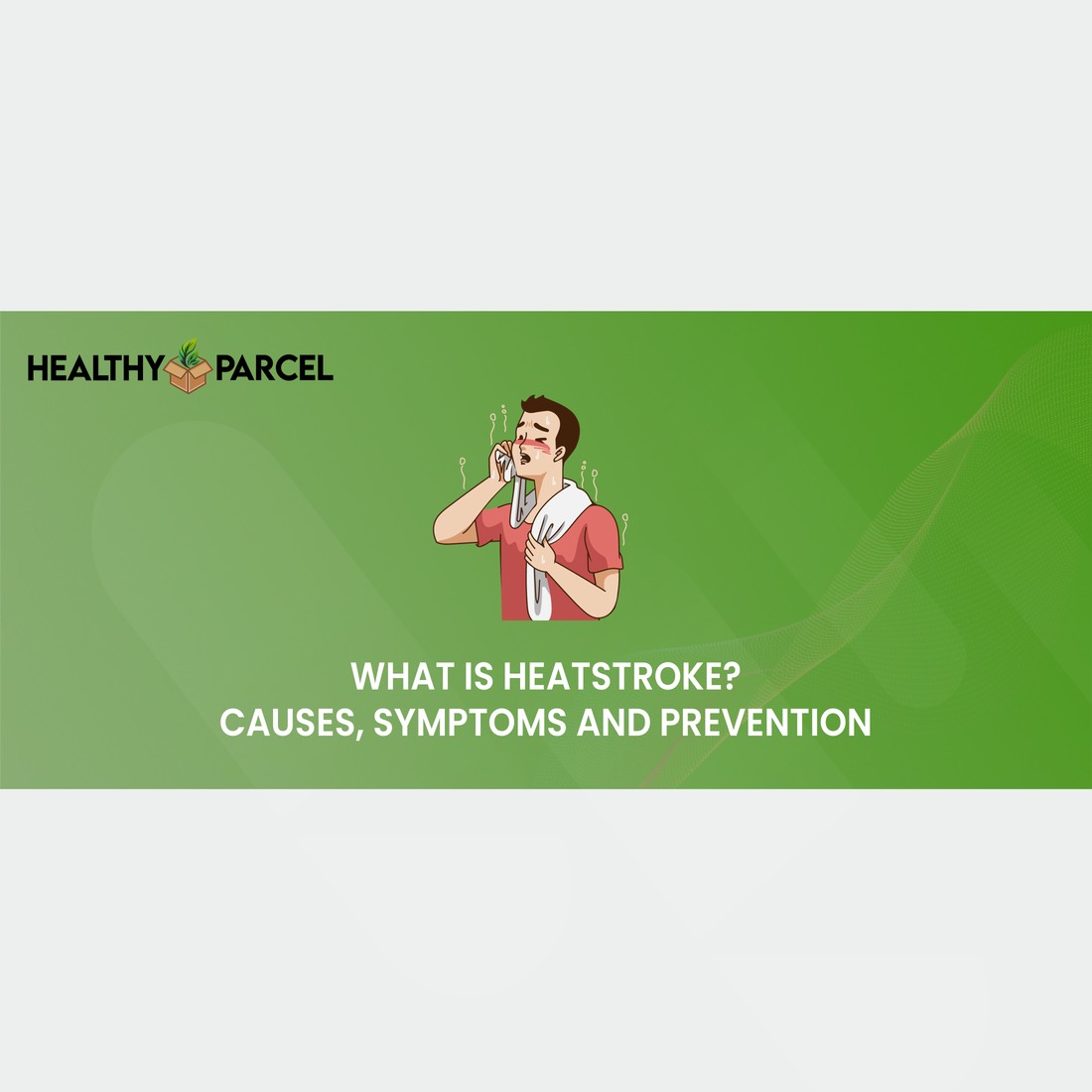What is heatstroke?

Heatstroke is a serious and potentially fatal condition where your body overheats, reaching temperatures above 104°F (40°C). Also known as sunstroke, it's the most severe type of heat-related illness. If untreated, heatstroke can cause brain damage, organ failure, or even death.
Types of Heatstroke
There are two main types of heatstroke:
Exertional heatstroke: This occurs from physical exertion in hot, humid conditions and can develop within a few hours.
Non-exertional heatstroke: Also known as classic heatstroke, this type is often due to age or underlying health conditions and usually develops over several days.
Heat Exhaustion vs. Heatstroke

Heat exhaustion and heatstroke are both heat-related illnesses. Heat exhaustion can progress to heatstroke if not treated, but it's generally less severe and doesn’t cause neurological issues or pose a significant life-threatening risk.
Who is at Risk for Heatstroke?

Anyone can get heatstroke, but certain groups are at higher risk:
- Infants and the elderly, due to less effective temperature regulation.
- Athletes, soldiers, and workers in hot environment
Other factors increasing the risk include:
- Alcohol consumption
- Male gender
- Dehydration
- Medications affecting temperature regulation (diuretics, sedatives, tranquilizers, heart, and blood pressure meds)
- Conditions affecting sweat production (like cystic fibrosis)
- Various medical conditions (sleep disorders, heart, lung, kidney, liver, thyroid, or vascular issues)
- Wearing heavy or tight clothing
- High fever
- Obesity
- Past history of heatstroke
- Poor physical conditioning or lack of acclimatization to hot weather
Symptoms and Causes
What Causes Heatstroke?
Heatstroke happens when your body can't cool itself. Normally, your hypothalamus regulates body temperature around 98.6°F (37°C). If your body accumulates more heat than it can dispel, your core temperature rises.
Symptoms

Heatstroke is a medical emergency. Seek immediate help if you notice any of these symptoms:
- Anhidrosis (dry skin that doesn't sweat, common in non-exertional heatstroke)
- Ataxia (movement and coordination problems)
- Balance issues
- Delirium (confusion or disorientation)
- Dizziness
- Excessive sweating after exercise (common in exertional heatstroke)
- Hot, flushed skin or very pale skin
- Low or high blood pressure
- Lung crackles (bubbling or gurgling sounds)
- Nausea and vomiting
- Oliguria (low urine output)
- Rapid breathing or tachycardia (fast heart rate)
- Seizures
- Syncope (fainting) or loss of consciousness
- Weakness
Potential Complications of Heatstroke

Heatstroke can lead to severe complications such as:
- Shock or coma
- Acute respiratory distress syndrome (ARDS)
- Brain swelling
- Kidney failure
- Liver failure
- Metabolic dysfunction
- Nerve damage
- Reduced blood flow to the heart and other circulatory problems
Diagnosis and Tests
Heatstroke is typically diagnosed in the emergency room. Healthcare providers will:
- Review symptoms and perform a physical exam
- Take your temperature
- Order blood tests or a urinalysis
- Possibly conduct a chest X-ray or electrocardiogram (EKG) to check heart function
Management and Treatment
Immediate medical treatment is crucial for heatstroke. While waiting for an ambulance, you can help cool the person by:
- Applying ice packs to the neck, groin, and armpits
- Offering slightly salted fluids like sports drinks or salted water
- Having them lie down in a cool, shady, well-ventilated area
- Immersing them in cool water if available
- Misting them with water and using a fan for evaporative cooling
- Monitoring their breathing and ensuring airways are clear
- Avoiding medications such as aspirin or acetaminophen
- Removing tight or heavy clothing
At the hospital, treatments may include:
- Cooled intravenous fluids
- Cooling blankets
- Ice baths
- Medications to prevent seizures
- Supplemental oxygen
- Cold-water lavage using catheters, if necessary
Cooling treatments are typically stopped when the body temperature reaches about 102°F (38.9°C). The length of the hospital stay will depend on the severity of the heatstroke and the condition of the organs
Prevention
You can prevent heatstroke by:
- Avoiding strenuous physical activities in hot, humid conditions.
- Drinking sports drinks, lightly salted water, or broth.
- Gradually acclimating your body to warm temperatures over a few weeks if you need to be in hot conditions for work or sports.
- Never leaving children or pets in closed, hot spaces like cars.
- Staying in air-conditioned or well-ventilated areas during heat waves.
- Wearing lightweight, light-colored, and loose-fitting clothing when out in the heat.
Conclusion
Heatstroke is a severe and potentially fatal condition that can be prevented with proper precautions. By staying hydrated, avoiding strenuous activities in extreme heat, acclimating gradually to warmer conditions, and ensuring access to cool environments, you can significantly reduce the risk. Awareness and prompt action are key to preventing and managing heatstroke, ensuring safety and well-being during hot weather.

